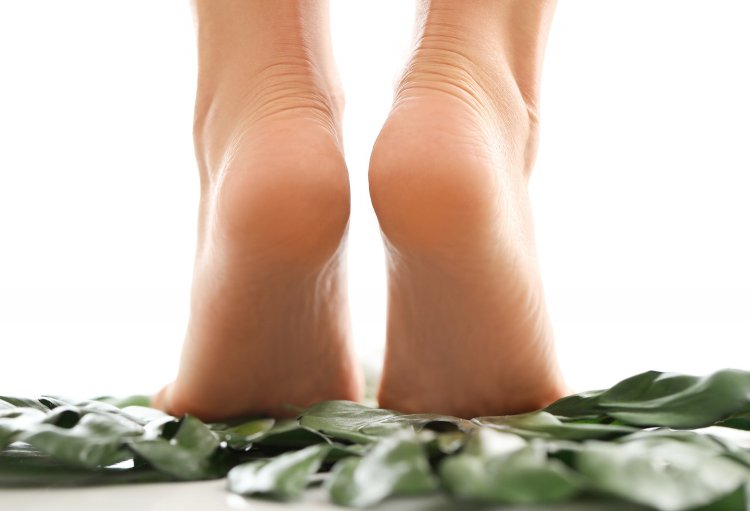Drop Foot: Comprehensive Guide to Causes, Symptoms, Diagnosis, and Treatment
Drop foot, medically termed as foot drop, is a debilitating condition characterized by the inability to dorsiflex the foot and difficulties in controlling its eversion. This impairment, often unilateral, hampers the natural gait pattern, leading to challenges in walking, increased risk of falls, and potential postural abnormalities. Understanding the multifaceted aspects of drop foot, including its causes, symptoms, diagnosis, and treatment modalities, is crucial for effective management and improved quality of life for affected individuals.

Anatomy and Function
Before delving into the specifics of drop foot, it's essential to grasp the anatomy and function of the peroneal nerve and associated musculature. The peroneal nerve, originating from the sciatic nerve in the thigh, innervates the muscles responsible for dorsiflexion of the foot, namely the tibialis anterior, extensor digitorum longus, and extensor hallucis longus. Dysfunction of this nerve or the muscles it supplies disrupts the coordinated movement necessary for normal ambulation.
Causes of Drop Foot
Drop foot can stem from a myriad of etiological factors, including:
- Traumatic injuries: Direct trauma to the peroneal nerve, such as fractures or dislocations around the knee or fibular head, can result in nerve compression or laceration.
- Neurological disorders: Conditions affecting the central nervous system (CNS), such as stroke, spinal cord injury, multiple sclerosis, or brain tumors, can disrupt the neural pathways responsible for motor control.
- Musculoskeletal disorders: Degenerative conditions like lumbar disc herniation, spinal stenosis, or peripheral neuropathy can impinge on the peroneal nerve or compromise muscle function.
- Iatrogenic causes: Surgical procedures involving the lower extremities or prolonged compression during prolonged surgical positioning can inadvertently injure the peroneal nerve.
- Idiopathic: In some cases, drop foot may occur without an identifiable cause, termed as idiopathic drop foot.
Symptoms of Drop Foot
The hallmark symptom of drop foot is the inability to dorsiflex the foot, leading to a characteristic high-stepping gait pattern. Patients often report tripping, stumbling, or dragging their foot while walking. As a compensatory mechanism, individuals may exhibit exaggerated hip or knee flexion to clear the affected foot during the swing phase of gait. Over time, this abnormal gait pattern can result in muscle imbalances, joint stiffness, and postural changes.
Diagnosis of Drop Foot
Diagnosing drop foot necessitates a comprehensive evaluation encompassing medical history, physical examination, and diagnostic tests. Clinical assessment may include assessing gait, muscle strength, reflexes, sensation, and proprioception. Imaging modalities such as X-rays, magnetic resonance imaging (MRI), or computed tomography (CT) scans can help identify structural abnormalities or lesions affecting the peroneal nerve or adjacent structures. Electrophysiological studies, including nerve conduction studies (NCS) and electromyography (EMG), provide valuable insights into nerve function and muscle activity, aiding in the localization and severity assessment of nerve injury.
Treatment Approaches
Management strategies for drop foot aim to address the underlying cause, alleviate symptoms, restore functional mobility, and prevent complications. Treatment modalities may include:
- Conservative measures: Orthotic devices such as ankle-foot orthoses (AFOs) or braces provide external support, maintain ankle stability, and facilitate a more natural gait pattern. Physical therapy interventions focus on strengthening weak muscles, improving range of motion, and optimizing gait mechanics through targeted exercises and gait training.
- Nerve stimulation techniques: Functional electrical stimulation (FES) devices deliver electrical impulses to the peroneal nerve or affected muscles, promoting muscle activation and facilitating dorsiflexion during walking. Transcutaneous electrical nerve stimulation (TENS) may also offer symptomatic relief by modulating pain perception and improving muscle function.
- Surgical interventions: In cases refractory to conservative management or severe nerve injury, surgical options such as nerve decompression, nerve grafting, tendon transfers, or muscle tendon transfers may be considered to restore motor function and enhance gait mechanics.
Prognosis and Complications
The prognosis for drop foot largely depends on the underlying etiology, severity of nerve injury, and responsiveness to treatment. While many individuals experience significant improvement with conservative measures or surgical interventions, some may continue to experience residual deficits or functional limitations. Without appropriate management, drop foot can predispose individuals to secondary complications such as recurrent falls, musculoskeletal deformities, pressure ulcers, or decreased quality of life.
In conclusion, drop foot is a complex neuromuscular condition with diverse underlying causes and clinical manifestations. A thorough understanding of its pathophysiology, diagnostic evaluation, and multidisciplinary treatment approaches is essential for optimizing outcomes and enhancing the functional independence and well-being of affected individuals. By adopting a comprehensive and individualized approach to management, healthcare providers can effectively address the unique needs and challenges posed by drop foot, thereby improving patient outcomes and overall quality of life.
#AnatomyAndFunction #CausesOfDropFoot #SymptomsOfDropFoot #DiagnosisOfDropFoot #TreatmentApproaches #PrognosisAndComplications #DropFootAwareness #NeurologicalDisorders #MusculoskeletalDisorders #PhysicalTherapy #OrthoticDevices #NerveStimulation #SurgicalInterventions #HealthcareManagement #FunctionalIndependence #QualityOfLife
Disclaimer:
The information provided in this article is for educational purposes only and should not be considered medical advice. If you have any health concerns or are experiencing symptoms, it is important to consult with a healthcare professional, such as a doctor or clinic, for proper diagnosis and treatment. Always seek the advice of your doctor or other qualified health provider with any questions you may have regarding a medical condition. Do not disregard professional medical advice or delay in seeking it because of something you have read in this article.
What's Your Reaction?





















